The EffWeek conference was a sell-out success again in 2019. For those who couldn’t be there, here’s a summary.
Agenda
Setting the Context
The CEO opportunity – Stephen Maher, CEO of MBA & Chair, IPA Effectiveness Board
- The FT’s Board-Brand Rift research reveals that half of business leaders rate their knowledge of brand-building as average to very poor.
- Eff Works is launching a campaign to convince C-suite executives of the value of investing in the long-term health of brands – beginning with a series of full-page ads in the FT.
The UK media landscape – Claire Enders, CEO of Enders Analysis
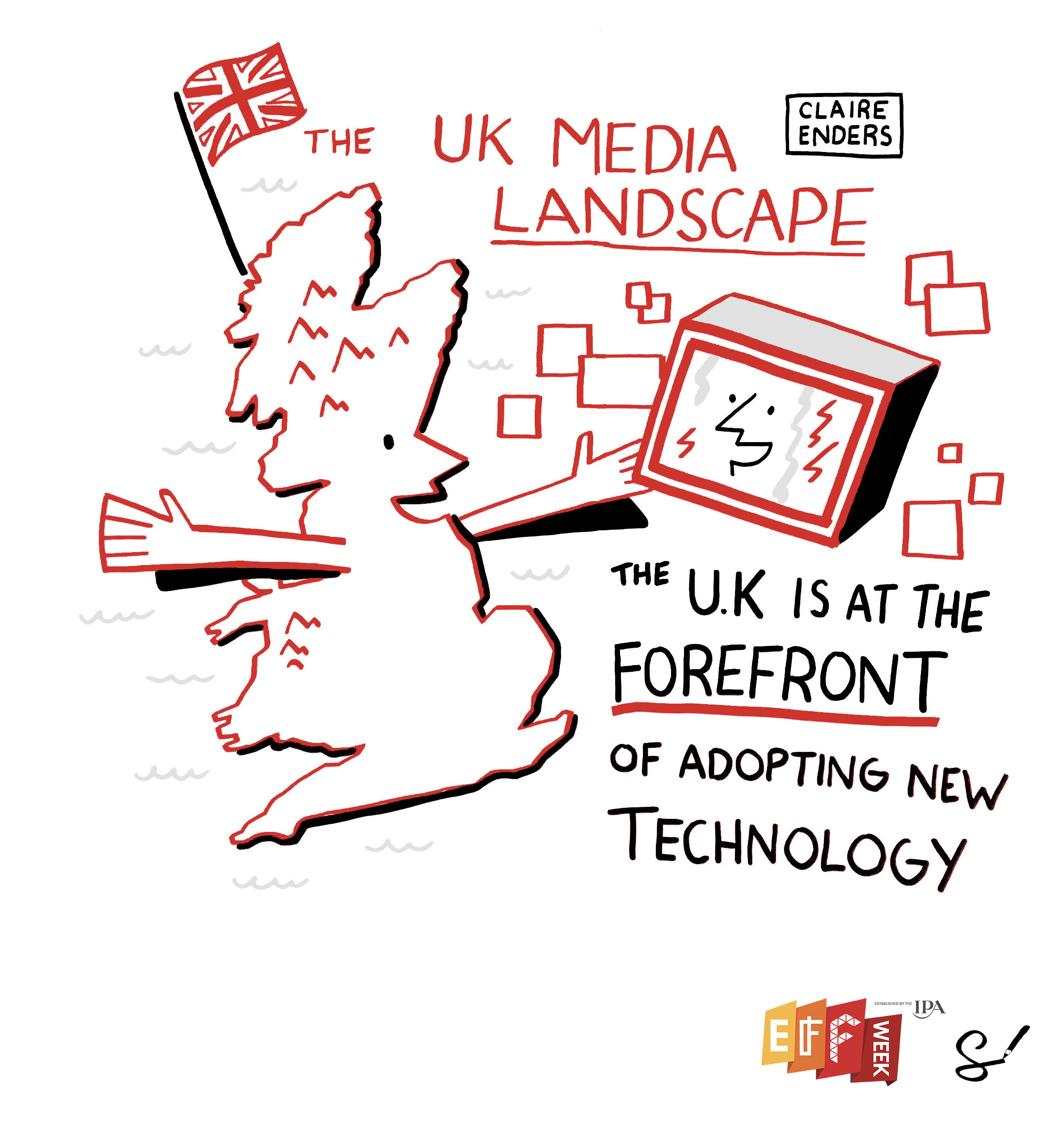
- UK is world’s most advanced online advertising market. Online advertising (primarily Google and Facebook) has been a boon to UK small businesses over the past 15 years, particularly the growing ranks of micro-businesses.
- Netflix and Amazon are massively increasing spend on content production. This ‘avalanche’ of streamed video is changing the way we watch – particularly among younger audiences.
- UK broadcasting regulations provides a safe environment for brands and audiences alike, but new streaming players don’t face the same scrutiny – creating a risk for brands and for UK society at large.
21st century brands in the US – Neil Barrie, Global Managing Partner, Twenty First Century Brand

21st century brands are built from the centre, not reverse engineered by the marketing department. They’re built on four pillars of excellence:
a.) purpose-led (e.g New York Times doubled paid subscriptions within a year with its relentless focus on ‘truth’ )
b.) community-driven (e.g. Glossier actively involves customers in product development)
c.) tech-enabled (e.g. mobile banking app N26 offers enhanced UX compared to high street banks)
d) narrative-focused (e.g Airbnb’s ‘Why Vacation somewhere when you can live there’ campaign)
The China Brandscape – Viveca Chan, CEO, WE Marketing
- Technology has changed the culture of China, merging the offline and online worlds.
- At Luckin Coffee, customers must order and pay via the company’s app. The fast-growing start-up – which IPO’d just 18 months post-launch – has 2,000 pick-up locations, most with no seating. By saving money on rent, the company aims to offer coffee that’s better quality than Starbucks but 40% cheaper.
Brand
Behave like a 21st century brand – Sue Unerman, Chief Transformation Officer, MediaCom and Convenor of Judges, IPA Effectiveness Awards
- How are brands building resilience to succeed in the 21st century? Here are examples from last year’s IPA Effectiveness Awards: diversity (British Army), purpose (Barclays), frictionless (Ella’s Kitchen), personal and personalised (IKEA), culture (Guinness), data (32 Red), open source and partnering (Suzuki & ITV), experience (AirBnB), integrated media and messaging (Audi).
- Wants to see a wider variety of entries to next year’s awards: not just advertising but case studies of effective CRM, UX, sponsorship, use of data, etc. If you can prove effectiveness, please enter.
The value of experience – Simon James, International Lead – Group VP of Data Science & AI, Publicis Sapient International
- Service brands are spending 5x more on customer experience than marketing, yet it’s challenging to measure the return on investment. Where are the Binet and Field of CX?
- Publicis Sapient used qualitative focus groups to measure the value of CX in the personal banking sector. They developed three metrics: Experience Stock (memorability, quality, frequency of experience), Reputation Stock (mentions, sentiment) and Net User Growth (acquisition, retention).
- Key findings: reputation in isolation is not the main growth driver for banks. Instead, digital experience is driving reputation and growth. Digital disruptor banks have higher ‘Experience Stock’ than legacy brands (and are growing faster as a result).
- Marketing should own CX, because it’s a key growth driver.
Panel: New brand behaviours
Cheryl Calverley, CMO, EveSleep / Oliver Snoddy, VP Brand and Creative, Deliveroo / Abba Newbery, CMO, Habito
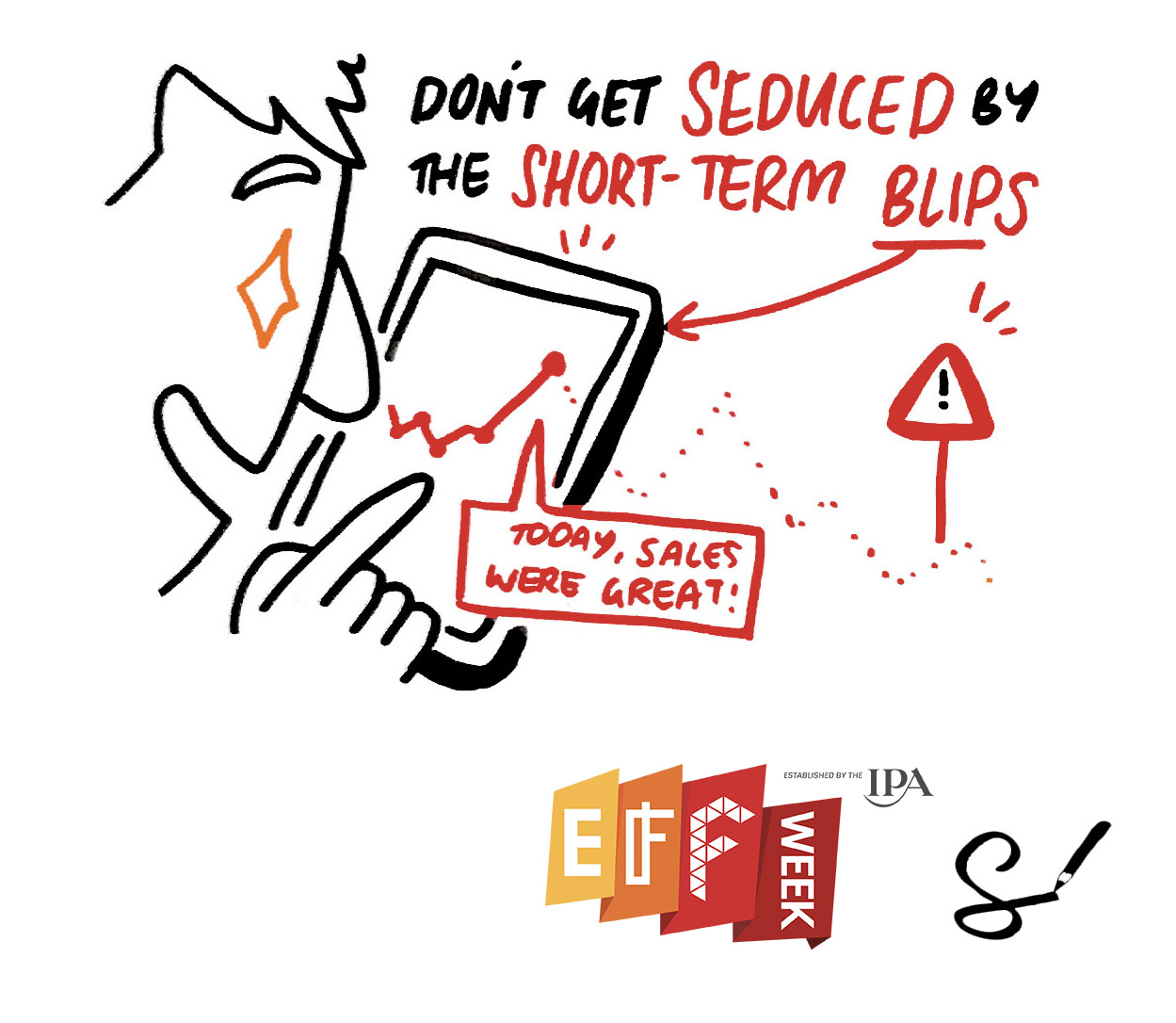
On the difference between challenger and legacy brands
AN: There’s this belief – especially in fast-growth businesses – that if you make a great product, they will come. We have to balance a great product and a great brand, distributed and marketed in the right way.
OS: Not everything can be built through conversation – acting somewhere between a traditional brand and a new brand is the answer.
CC: Something that big corporates should fear is how fast small businesses, start-ups, are sprinting and “learning and trying again and again until we get it right”.
On the role of data
AN: Other businesses would love to have the short-term data we do, but the hardest thing for me is to not let marketing be judged in the short term. Because it does work in the short term, but we need to look long term.
OS: We’re drowning in data – the challenge is looking at longer-term metrics. Half my job is getting the business to focus on emotion-building and long-term perceptions.
On purpose
CC: Purpose is really customer insight, taken to the powerful place it should be.
OS: The hardest bit of the job is deciding what to do and what not to do. The only answer is to have a very clear idea of what your brand is and its purpose.
Data
Decide based on evidence – Lucas Brown, Chief Strategy Officer, Total Media
- According to the 2018 Gartner Hype Cycle, data-driven marketing is sliding down the ‘Peak of Inflated Expectations’ into the ‘Trough of Disillusionment’.
- We need to: blend the short and long-term, embrace a data culture, triangulate data and encourage innovation in evidence metrics.
Marketing effectiveness practice that makes a difference to investment
Adam Ben-Yousef, Global Marketing Effectiveness Director, Diageo & Andrew Geoghegan, Global Planning Director, Diageo
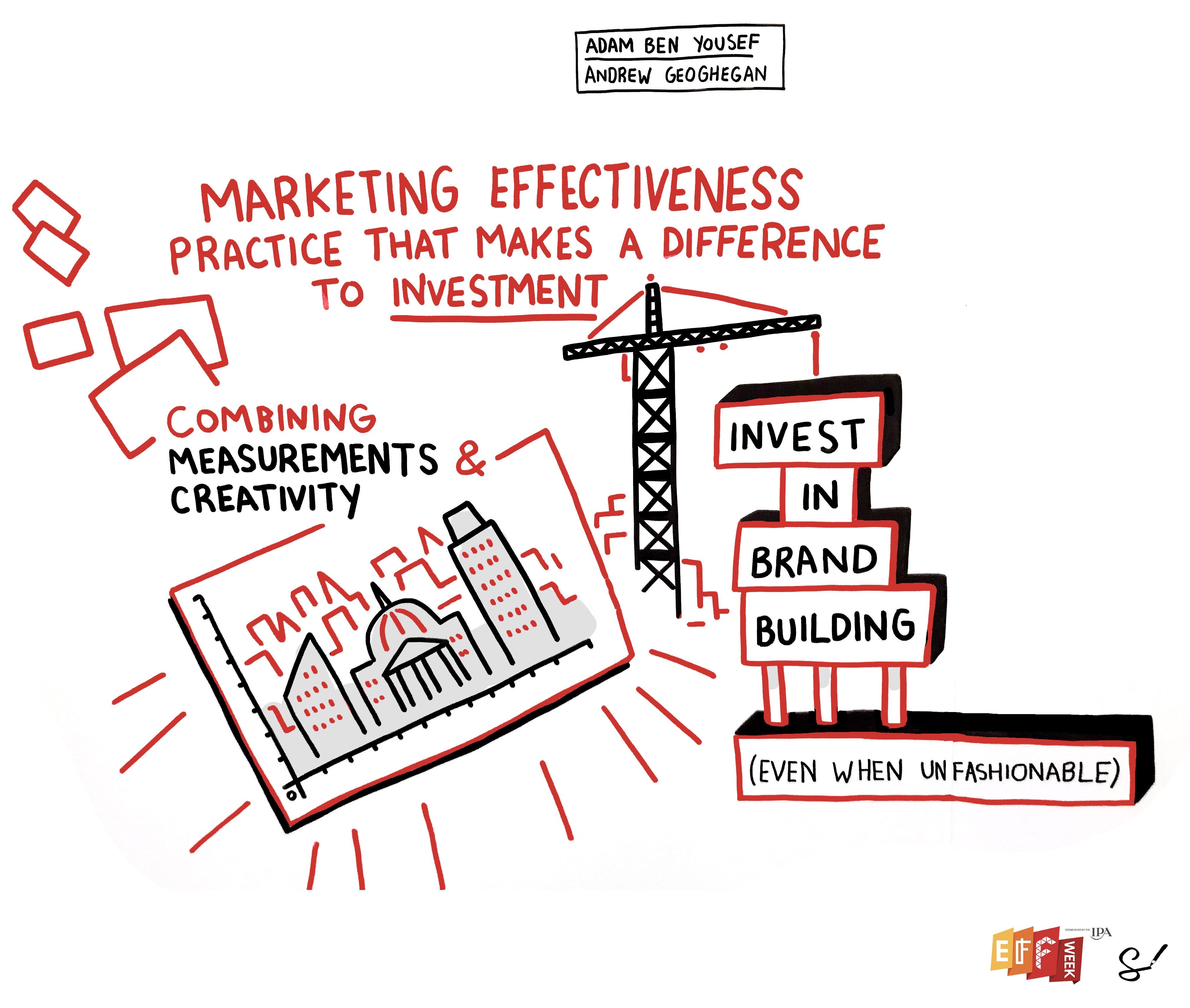
- Diageo launched its effectiveness drive – including an education programme and new platform, Catalyst – as part of a company-wide productivity drive. The aim was to improve profits by optimising spend, rather than cost-cutting.
- Catalyst provides marketing teams in 60 countries with instant data to help them decide how and where to invest. The next stage includes standardising KPIs and a new tool which tracks digital media spend and suggests live course corrections based on past data.
- The effectiveness drive increased gross profit ROI 16-fold and as a result, Diageo has increased marketing spend by 31%.
Panel: Measuring the long-term, today
Matthew Taylor, Econometrics Programme Lead, Google (Chair) / Tracy De Groose, Exec Chair, Newsworks / Les Binet, Head of Effectiveness, adam&eveDDB / Matthew Chappell, Senior Partner, Gain Theory / Sam Day, CMO, Confused.com
On data
TdG: There is more data than ever before but we are paralysed by it. Marketers have to manage both data and creativity – and they are so very different.
LB: Data is dumb – it’s what you do with it that matters. There are different ways of measuring and interpreting and they can tell us conflicting things. We need to test and experiment to find out what is true.
On short-term vs long-term
SD: You have to build trust as a CMO. Buy yourself enough short-term gain to create long-term value.
LB: We’ve become short-termist because we have got so much short-term data to distract us. You can’t do long-term measurement without long-term data – so start collecting it. Long-term can just mean beyond six months of data.
Further reading: Measuring Strategy – Getting to best-in-class effectiveness (Gain Theory/Eff Works) and Measuring Effectiveness – three grand challenges (Google)
Culture
Live the learning – Tom Roach, Executive Strategy Director and Head of Effectiveness, adam&eveDDB

- Tips on building an effectiveness culture:
- Effectiveness is like a muscle – it needs exercising everyday.
- Learn from what doesn’t work, as well as what does.
- Share stories not spreadsheets. Make the numbers dance by expressing them in a creative way.
- Effectiveness learning shouldn’t be restricted to writing a 4,000 word academic essay every two years – it can be a poster, a tweet, a five bullet email.
Setting up the goal posts for culture change. Lessons from women’s football
Kelly Simmons MBE, Director of the Women’s Professional Game, The Football Association & Tim Hulbert, Managing Director, Group Head of Brand and Insights, Barclays.
On Barclays’ decision to sponsor the Women’s Super League
TH: It was a sweet moment where common sense and gut feeling came together. It just felt right- and quite easy to do it.
KS: It was a record investment in women’s sport in Europe. The marketing investment was also key. It led to huge coverage – 250 major articles in press – helping us to capitalise on the excitement of the World Cup.
How to reinvent an eastern brand for the west – Andrew Garrihy, Global Chief Brand Officer, Huawei
- Huawei started 30 years ago in Shenzhen, China as a network specialist – only started consumer business seven years ago but it now accounts for 48% of business. Our chairman rotates every six months, we’re 99% employee-owned and 45% of our employees work in R & D.
- A national icon in China but a challenger brand in the west. How to reinvent for a western market? Truth is you don’t – you find the authentic core of the business and tell that story.
Walking the walk – Simon Peel, Global Media Director, Adidas
- A focus on ROI led us to prioritise efficiency over effectiveness and over-invest in performance marketing over brand building. Our brand/performance split was 23:77 – far from the 60:40 recommended by Binet & Field.
- Now we’re on a journey to overhaul the way success is measured and achieve a better balance between brand and performance.
- One key step has been adopting econometrics. This has uncovered some valuable insights: most revenue comes from first-time buyers, not loyal customers; and category advertising increases sales across the brand, not just in that category.
- Econometrics also revealed the company should invest more in video, TV, outdoor, and cinema – something that was hard to see when the company relied solely on last-click attribution.
Panel: Making culture change happen
Jo Hagger, Global Marketing Capabilities Director, Unilever / Gareth Jones, CMO, Ebay / Clare O’Brien, Head of Media Effectiveness and Performance, ISBA
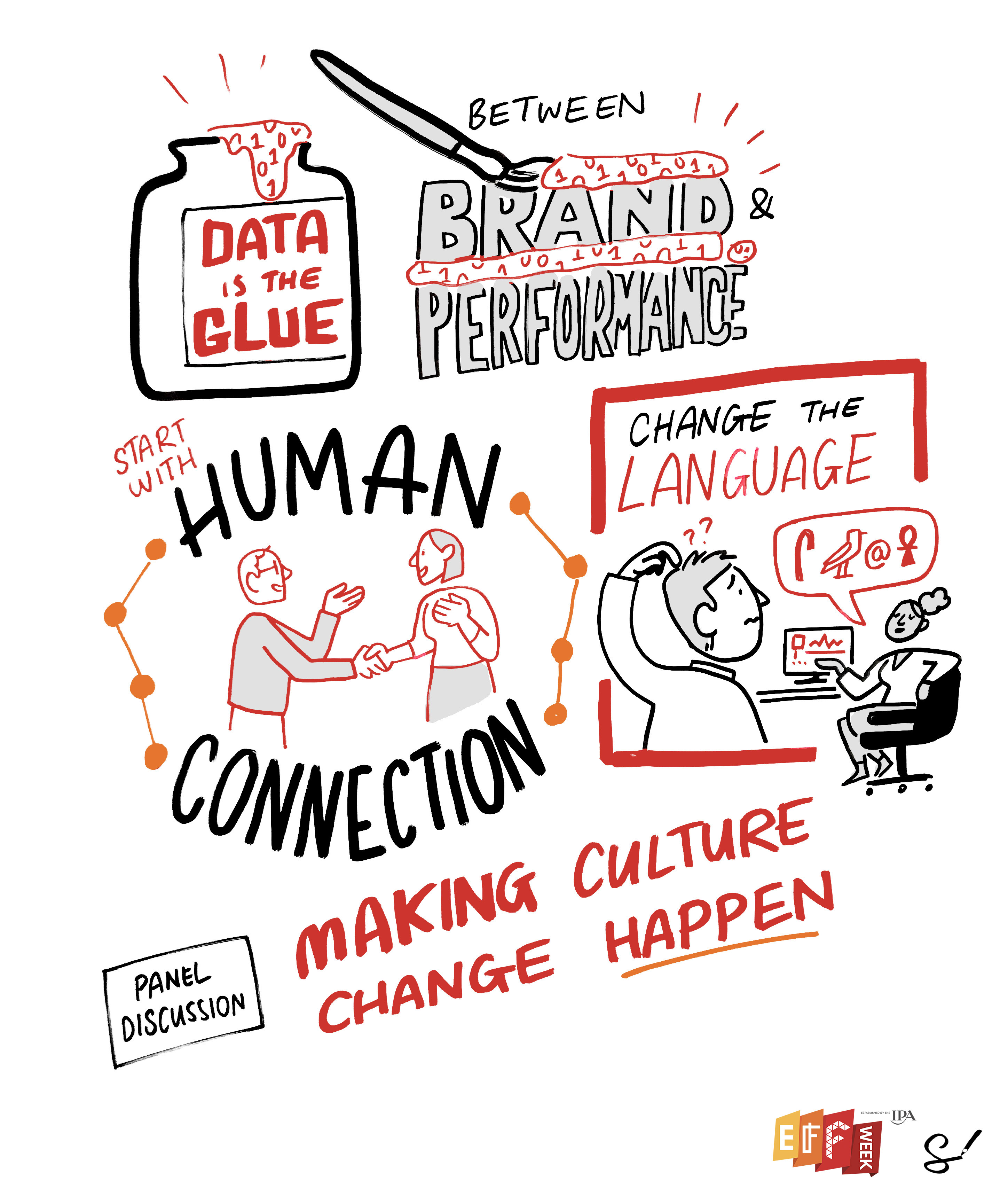
On balancing brand and performance
CoB: Even if a brand isn’t naturally performance-driven, the accessibility of performance metrics is mesmeric, addictive.
GJ: eBay has shifted investment from 10:90 (brand: performance) to 30:70. Our mantra is how do you sell more when you brand, brand more when you sell. We call it collapsing the funnel.
Relevancy and personalisation is what is driving people to return to the site, but the question is how do you sprinkle in creativity, which is what drives fame.
On building an effectiveness culture
JH: Walk in the shoes of the people least like you, whether a customer or a colleague with a different skillset.
Creativity
What makes a great film – Mark Kermode, Film critic, broadcaster and musician
- People think film critics are opinion formers. We’re not. The people who really influence whether you go to the cinema and see a film or not are your peers.
- Film critics are often dismissive of films that generate a physical response, such as fear or laughter, favouring films that make you go ‘hmm’. But the very best films do both.
Addressing the crisis in creativity – Orlando Wood, Chief Innovation Officer, System1 Group
- Wood’s new book, ‘Lemon. How the advertising brain turned sour‘, published by the IPA, sets out to explain the decline in advertising creativity – and puts forward a remedy.
- Research by neuroscientist Ian McGilchrist shows that the left and right brain don’t do different things – they do and understand things differently.
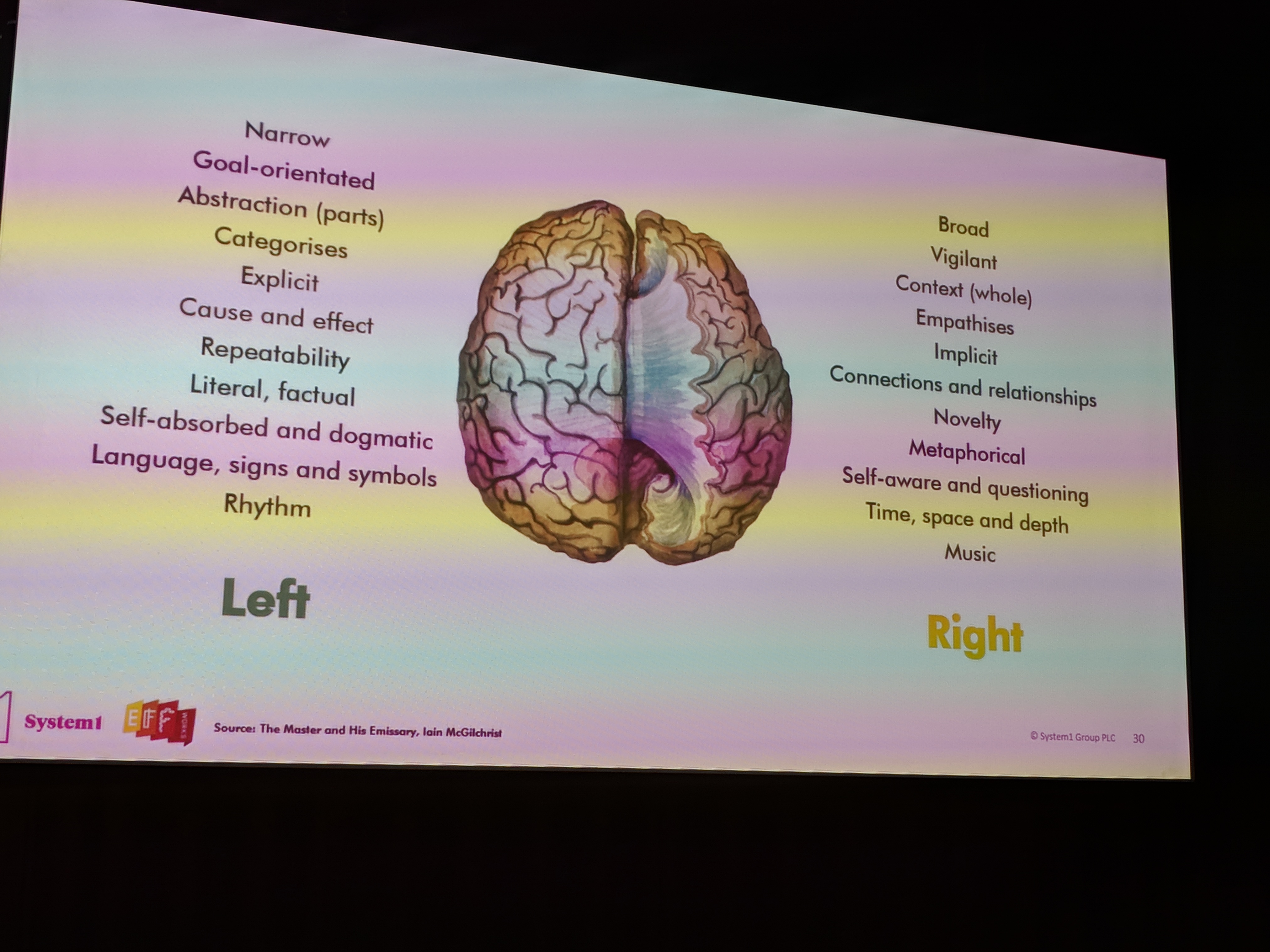
- Culture swings between eras of ‘whole-brained creativity’ and ‘left-brained creativity.’ Wood analysed TV ad breaks during Coronation Street over the past thirty years, and discovered that ‘left-brain’ advertising has become predominant since the mid-2000s.
- He calls for a rebalancing towards more right-brain advertising that makes people feel, using dialogue, narrative, playful language, a clear sense of place, melodic music, cultural references, accents.

Order your copy of the full ‘Lemon’ report via the IPA website (IPA members can buy it at a discount) or via Amazon.
Panel: Turning the tide on creativity
Carole Davids, Creative Director, The Elephant Room / Simon Gill, Chief Experience Officer, Isobar / Iain Tait, ECD, W+K London
IT: If we over-codify how we get to creative work, we lose the fun. It used to be that advertising was an outlet for creativity – but in an age when anyone can put her ad on YouTube – what else are we offering young creatives?
CD: Flexible working might be frustrating for some but we need to respect it and be open to how creatives work best.
SG: A side hustle gives creatives an understanding of how to run a business – what works, what doesn’t – and it makes them a more rounded person.
Further reading: The crisis in creative effectiveness (Peter Field)
Satellite Events
- Launch of The five principles of growth in B2B marketing (Binet & Field / LinkedIn).
Effectiveness is a team sport, so it was great to see the industry in the widest sense, come together. In an increasingly diverse and fragmented world, only by using all parts of the brain will we solve effectiveness challenges and design our campaigns to deliver short and long term value. That’s why what happens next is important – if the IPA can help facilitate progress on this with a long-term initiative around Marketing Effectiveness, we’ll definitely crack it.







